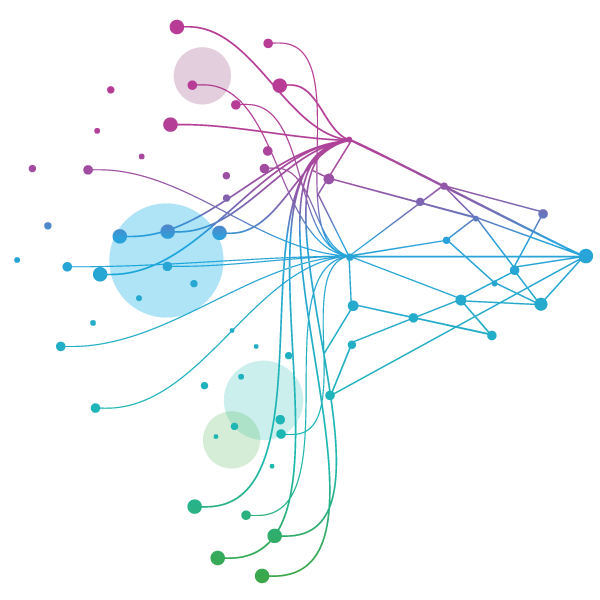Enable precise HCP targeting across dimensions like channels, timing, and messaging with industry-leading data and marketing services.






















- Blogs
- What It Takes to Create a Meaningful HCP Community — And Keep It Growing
Establishing a healthcare provider (HCP) community is not a one-time initiative — it’s a long-term strategic investment. While launching the platform is a critical first step, sustainable value comes from how you cultivate engagement, foster trust and deliver ongoing value.
As the lines between digital and physical engagement continue to blur, life sciences companies are reimagining how they connect with HCPs — not just at launch, but across the entire product lifecycle. The most successful organizations are those that treat HCP engagement as a long-term investment, rooted in real-time insights, personalized experiences, and a deep understanding of provider needs.
This shift impacts not only medical affairs and digital strategy teams, but also commercial and marketing leaders who are increasingly responsible for driving brand awareness, product adoption and sustained engagement in a highly competitive, regulated environment.
Why HCP communities matter more than ever
Although HCPs are increasingly digital, they still value in-person interactions. As digital natives enter the workforce, preferences are shifting towards interactive, self-guided content exploration — over 61 %1 of HCPs relying on digital sources now conduct their own research online or via email links to automated presentations. This creates a powerful opportunity for life sciences companies to meet HCPs where they are, with the right content, at the right time, through the right channel.
A well-designed HCP community does more than disseminate information. It also:
- Enables personalized, guided engagement
- Provides a secure, compliant space for peer-to-peer interaction
- Evolves with the product and the needs of its users
- Generates actionable insights that inform future strategy and campaign planning
Understanding the product lifecycle through the lens of HCP engagement
HCP communities don’t operate in a vacuum — they evolve in tandem with the product lifecycle. At each stage, HCPs have different needs:
- In early development, they may seek scientific rationale and trial opportunities.
- During pre-launch, they look for clinical data and peer validation.
- At launch, they need onboarding tools, prescribing guidance, and patient support resources.
- Post-launch, they value ongoing education, case studies and opportunities to collaborate.
From early development to post-launch support, the type of information HCPs seek — and how they prefer to receive it — changes significantly. Recognizing these shifts is essential to designing a community that delivers the right value at the right time. The visual below outlines how HCP engagement strategies can align with each phase of the product lifecycle to maximize relevance and impact.

The building blocks of a thriving HCP community
Creating a successful HCP community is like constructing a high-performance ecosystem — it requires more than just a digital platform. It’s about designing an environment that fosters trust, encourages participation, and delivers continuous value to HCPs. These foundational elements ensure that your community doesn’t sit barren after its launch — it thrives.
- Controlled, secure and simplified access. In a highly regulated industry, trust begins with compliance. A secure, authenticated environment ensures that HCPs feel confident engaging with scientific content, peer discussions and brand resources. Unlike open social platforms, a gated community protects sensitive information and supports regulatory requirements like GDPR and HIPAA. Hence, a seamless onboarding experience — one that verifies credentials quickly and introduces relevant content immediately — can make the difference between a one-time visitor and a long-term participant. Think of it as a concierge experience: personalized, efficient and welcoming.
- Dynamic engagement infrastructure. As HCP needs evolve with the product lifecycle, a connected ecosystem helps reduce information overload and meet those needs effectively. By offering structured, contextual engagement through on-demand content, live events, learning platforms, forums, interactive tools and expertise support, life sciences companies can guide HCPs through meaningful, personalized touchpoints.
- Personalization at scale. The current landscape of HCPs consists of highly intricate sub-segments, with unique needs based on specialty, expertise levels, digital maturity, and regional and educational needs. Ability to deploy select engagement tools and curated content paths, based on micro-community needs, can ensure you can deliver content that feels tailored and contextualized — without sacrificing scale.
- Two-way dialogue. HCP communities thrive on interaction, not just information sharing. Providing HCPs with a space to ask questions, share insights and connect with peers or brand experts fosters a sense of belonging and trust. An additional layer of engagement can be introduced by enabling on-demand support — like “Ask your Rep!” Empowering these communities with expert engagement specialists creates the opportunity for addressing enquiries with agility and nudging HCPs along the desired journey.
- Behavioral insights and feedback loops. Every interaction is a data point. By integrating data generating platforms, orchestrating engagements through an interconnected ecosystem, and capturing and analyzing behavioral signals across the community, you can continuously refine your strategy — identifying what content resonates, which segments are most active, and where gaps exist. These insights feed directly into your broader omnichannel efforts.
5 key strategic considerations when integrating HCP communities into omnichannel campaigns
Integrating HCP communities within the broader omnichannel strategy is essential to drive deeper engagements, meaningful interactions and stronger brand affinity. By orchestrating a connected end-to-end engagement plan — one that delivers consistent, personalized interactions across digital and human channels — you can drive HCP communities through a journey that evolves from content discovery to active knowledge exchange and collaboration.
- Build a unified experience. Life sciences should aim for cross-brand harmony by unifying efforts across products rather than creating isolated communities distributed across channels. Instead of relying on rigid brand portals, they should adopt flexible, scalable platforms that support multi-brand and multi-region strategies. By investing in integrated brand websites, community portals, CRM systems, marketing campaign tools, medical rep interactions and content delivery channels, you can create single point of access for HCPs, ensure consistent messaging and localization of information, streamline operations to reduce costs, and build a comprehensive view of HCP engagement levels.
- Compliance and governance first. Don’t treat compliance as an afterthought. Build it into your platform discussions from day one — ensuring that data privacy, consent tracking and content governance are embedded into the user experience. With community-based approach, opening a dialogue with HCPs can surface valuable insights — but it also introduces compliance risks. Invest in configurable technology that facilitates secure and gated conversations and establish clear governance frameworks to manage the trade-off between risks and insights effectively.
- Continuous investment in an active engagement pipeline. Before crafting an HCP engagement strategy, companies must first understand the scientific and digital behaviors of their target audience. This makes it possible to create personalized, context-aware engagement journeys tailored to each user segment. To maintain relevance and avoid stagnation, it’s necessary to deliver timely, channel-appropriate content in a balanced mix of educational resources, events and discussions — prioritizing quality interactions over quantity.
- Optimize for outcomes. To design deeper HCP engagement journeys, life sciences must move beyond surface metrics like clicks and impressions. By tracking behavioral and outcome-based indicators — e.g., asynchronous content interaction, peer collaboration and discussions, educational progression, participation trends, clinical tool adoption — teams can build a 360-degree view of engagement. These behavioral signals and insights help refine segmentation models, trigger timely rep engagement, optimize content and channel strategy, and improve next-best-action strategies, yielding personalized experiences at scale with demonstrable real-world impact.
- Organizational alignment and commitment. Community-building is a mindset shift. Ensure commercial, marketing and medical teams are aligned on goals, trained on tools, and empowered to contribute to the community’s success. It is crucial to internalize that communities don’t flourish overnight. Set realistic expectations, invest in continuous improvement, and stay responsive to HCP feedback. Over time, the trust and loyalty built will pay dividends across the brand portfolio.
Where community meets strategy
Building an HCP community isn’t just about launching a platform — it’s about creating a dynamic, trusted space where providers can learn, connect and grow with your brand. For commercial, marketing, medical and digital teams alike, the opportunity is clear: with the right strategy, infrastructure and data, life sciences companies can move beyond transactional engagement to build lasting relationships that drive real-world impact.
Latest Thinking
IQVIA OneKey Helps You Connect with HCPs
Related solutions
Create and implement a personalized communication strategy that aligns to individual HCP preferences.
Provider Reference Data Network. Customers expect agile, highly personalized engagement





